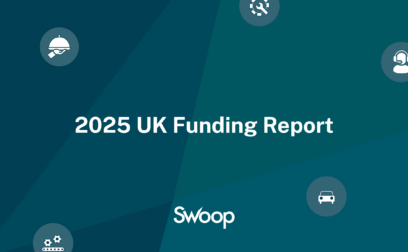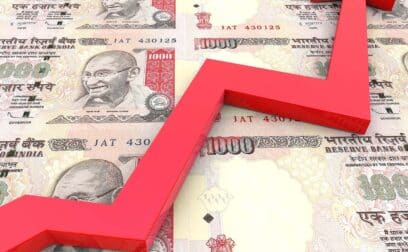TABLE OF CONTENTS
The government’s Recovery Loan Scheme (RLS), which ran until 30 June 2024, supported UK businesses with lending of up to £2m. It’s now been replaced by the Growth Guarantee scheme. Read on for details.
Page written by Arabella McAvoy. Last reviewed on September 25, 2024. Next review due April 6, 2026.

The third and final iteration of the Recovery Loan Scheme ran from 2022 until June 30th 2024.
One big change from the previous iteration of the scheme is that (for most borrowers) there was no requirement to confirm they have been affected by COVID-19.
The maximum facility size was £2 million, at least for borrowers outside the scope of the Northern Ireland Protocol, and £1 million for those in scope of the Northern Ireland Protocol.
RLS offered a government guarantee for small business lending; the government underwrote 70 per cent of what the lender could lose if a business defaults.
The UK Government first launched RLS in April 2021 with the aim of supporting access to finance for UK businesses recovering from the COVID-19 pandemic. It was originally intended to run until the end of 2021, subject to a review. In the Autumn Budget 2021 the government announced it would be extending the scheme until June 2022. The revamped RLS scheme took effect on 1 January 2022, with a lower maximum amount available to businesses (£2m) and a lower government guarantee (70%). And on 20 July 2022 the government announced it would be extended further.
By June 2022 there were more than 80 accredited lenders, offering lending for up to six years.
Businesses who decided RLS was not for them also considered alternative finance options such as merchant cash advances or invoice finance.
If you’re looking to refinance loans you took out during the pandemic or you need extra cash to realise your growth plans, it’s still easy to find out what you might qualify for by registering with Swoop.

A word from Andrea
"With the final iteration of the Recovery Loan Scheme, businesses weren't required to prove that they were affected by the COVID-19 pandemic. Because of this, many businesses looked to RLS in order to better manage cashflow, investment, and growth. If your business previously utilised CBILS or RLS, it's worth considering the newer Growth Guarantee Scheme, which since July 2024 has replaced RLS."
The Recovery Loan Scheme (RLS) was a government scheme aimed at supporting access to finance for UK businesses.
The initial phases of RLS, which closed on June 30 2022, aimed to support access to finance for UK businesses recovering from the COVID-19 pandemic.
The third and final iteration, which ran until 30 June 2024, removed the need for a business to confirm it has been impacted negatively by COVID-19.
RLS was designed to be used for business purposes, for example, managing cashflow, investment and growth, and was open to a broad range of businesses, including to those which had previously taken out a CBILS, CLBILS or BBLS.
RLS replaced the Coronavirus Business Interruption Loan Scheme (CBILS), the Coronavirus Large Business Interruption Loan Scheme (CLBILS) and the Bounce Back Loan Scheme (BBLS), all of which closed to new applicants on 31 March 2021.
While the Recovery Loan Scheme aimed to improve the loan terms available to UK businesses, these terms reflect the protection that the 70% government guarantee offers to lenders.
RLS has since been replaced by the Growth Guarantee Scheme, which is much the same as the final iteration of the Recovery Loan Scheme.
RLS launched on 6 April 2021 and ran until June 30, 2024. RLS was initially set to close at the end of 2021 but in Autumn Budget 2021 the Treasury announced it was extending the scheme for six months (until June 30 2022), albeit but with a reduced maximum amount available to businesses and lower government guarantee (see below). In July 2022 the government announced it would extend the scheme for a further two years. It has been replaced by the Growth Guarantee Scheme.
From 1 January 2022, the Recovery Loan Scheme was restricted to small and medium-sized enterprises (SMEs), as announced in the Autumn Budget, 2021.
When it was initially opened, UK businesses of any size could apply for a loan or overdraft. This was the main difference between RLS and the various coronavirus finance support schemes it replaced (BBLS, CBILS, CLBILS).
Businesses had to meet certain criteria in order to access the scheme. Specifically, a business had to:
If a lender could offer finance on normal commercial terms without the need to make use of the scheme, they may have done so.
Three more things to note:
Yes, businesses could apply for finance under RLS even if they had previously borrowed under BBLS, CBILS or CLBILS. Some businesses might’ve been able to borrow more under the RLS than they did previously – though the maximum depended on the lender’s assessment and the scheme’s requirements. Some may have been able to borrow less.
After 1 January 2022 the revamped Recovery Loan Scheme allowed businesses to borrow up to a maximum of £2 million (per business) for all types of borrowing, i.e. term loans, overdrafts, invoice finance and asset finance.
This £2 million maximum remained the same for the final iteration of the Recovery Loan Scheme, until 2024, but only for borrowers outside the scope of the Northern Ireland Protocol. The maximum was £1 million for those inside the scope of the Northern Ireland Protocol.
Minimum facility sizes varied, starting at £1,000 for asset finance and invoice finance, and £25,001 for term loans and overdrafts.
The annual effective rate of interest and upfront and other fees could not be more than 14.99%, according to the British Business Bank.
GGS is a continuation of RLS and the terms remain broadly unchanged. Find out how much you could borrow with our Growth Guarantee Scheme calculator.
Your loan details
This calculator is intended for illustration purposes only and exact payment terms should be agreed with a lender before taking out a loan.
Your results
Monthly payments
£-
Avg. monthly interest
£-
Total interest
£-
Total cost of finance
£-
Term lengths depend on the type of finance (product) taken out. Businesses could borrow:
Ther two key differences were:
The UK Government originally gave lenders an 80% guarantee for applications made under the Recovery Loan Scheme – until the end of 2021. The revamped scheme, announced at the Autumn Budget 2021, saw the government reducing the guarantee to 70% for applications made on or after 1 January 2022.
The guarantee meant that if a business defaults on the loan, the lender cou;d recoup 70% of the outstanding value of the loan from the government (or 80% for applications made before 30 December 2021). This guarantee gave lenders confidence to lend to businesses. The borrower, however, was liable for 100% of the debt.
Businesses who took out a loan under RLS could use the funds for any legitimate business purpose, for example:
Yes, businesses with total financing needs (including any increase) greater than the minimum facility sizes available under RLS, were able to refinance their BBLS or CBILS loan with a Recovery Loan.
For businesses who did refinance, applications were treated as new applications for RLS and had to meet the scheme’s eligibility criteria. Businesses were able to either refinance through existing lenders or apply to a different accredited lender.
Since there was no Business Interruption Payment (BIP) under RLS, any business who refinanced a BBLS or CBILS facility (partially or in full) had to forego its remaining BIP entitlement (up to a maximum of 12 months from the outset of the original facility) as part of the re-financing process.
Businesses with a Bounce Back Loan that were able to refinance under RLS should be aware that borrower protections and scheme eligibility (and terms) under these two schemes differed.
The total amount a business could borrow under RLS, including any additional lending secured via the refinancing of an existing facility, depended on two things: a lender’s affordability assessment and the requirements of the scheme.
As you’d expect, businesses with bad credit had fewer Recovery Loan options available to them and the interest rates they were able to secure were higher.
That said, some businesses which had been refused credit in the past had been able to apply for the Recovery Loan Scheme. Lenders reviewed each application on its own merits, i.e. on a case-by-case basis.
Read more: understanding and improving your business credit score.
Yes, sole traders were able to apply for the Recovery Loan Scheme.
In fact, as long as a business satisfied the other eligibility criteria, RLS was open to:
That said, businesses had to be generating more than 50% of their turnover from trading activity in the UK (i.e. the sale of goods or services), unless they were applying as a registered charity or further education establishment.
Then-Chancellor Rishi Sunak announced the Recovery Loan Scheme as part of the Spring Budget on 3 March 2021 and announced updates (and a six-month) extension to the RLS scheme on 29 October 2021. The government also announced a two-year extension on 20 July 2022.
In the 2024 Spring Budget, Chancellor Jeremy Hunt announced the Growth Guarantee Scheme, which has now replaced RLS but the scheme remains much the same.
In addition to the Recovery Loan Scheme, which provided debt finance to businesses, the government launched the £375bn Future Fund: Breakthrough in July 2021. This replaced the Future Fund and sees the government investing equity (alongside the private sector) in fast growing R&D intensive companies.
If you think a loan is the best option for your business right now – or if you are interested in other types of lending such as invoice finance, asset finance, or a revolving credit facility, keep looking – don’t give up! If you need help navigating what’s out there, your first step is to register with Swoop so that we can match you with the most relevant funding options. We can also help you with equity and grants – and making savings on your everyday costs such as business bank accounts.
Our funding managers are on hand if you have any questions about funding options – contact us here.
Yes, lenders carried out a credit check and possibly a fraud check. The types of checks varied between lenders.
Now the Recovery Loan Scheme has finished and has been replaced by the Growth Guarantee Scheme, you can no longer apply under RLS.
If you’re interested in GGS, which is essentially the same as RLS, Register with Swoop to discover your options and speak to a funding expert.
Arabella is a former BBC business journalist who began her career as a policy analyst at the Bank of England and Financial Conduct Authority, and more recently worked in the communications and policy team at the British Business Bank.
Swoop promise
At Swoop we want to make it easy for SMEs to understand the sometimes overwhelming world of business finance and insurance. Our goal is simple – to distill complex topics, unravel jargon, offer transparent and impartial information, and empower businesses to make smart financial decisions with confidence.
Find out more about Swoop’s editorial principles by reading our editorial policy.
Other government support pages
Get your free Recovery Loan Scheme quote today
Join the 95,000+ businesses just like yours getting the Swoop newsletter.
Free. No spam. Opt out whenever you like.



























We work with world class partners to help us support businesses with finance
Kingfisher Way, Silverlink Business Park, Newcastle upon Tyne, NE28 9NX, UK
View in Google Maps35 Bull Street, Lewis Building, Birmingham B4 6AF, UK
View in Google MapsAberystwyth Innovation and Enterprise Campus
Gogerddan Campus
Aberystwyth University
Ceredigion
SY23 3EE
Dogpatch Labs, The CHQ Building, Custom House Quay, Dublin, Ireland
View in Google MapsSuite 801, Level 8, 84 Pitt Street, Sydney, NSW 2000, Australia
View in Google Maps43 W 23rd St, New York, NY 10010, United States
View in Google Maps21 Dreyer Street, Cape Town, South Africa, 7708
View in Google MapsClever finance tips and the latest news
Delivered to your inbox monthly
Join the 95,000+ businesses just like yours getting the Swoop newsletter. Free. No spam. Opt out whenever you like.
Thanks for requesting a call back
a member of the team will be in touch.




